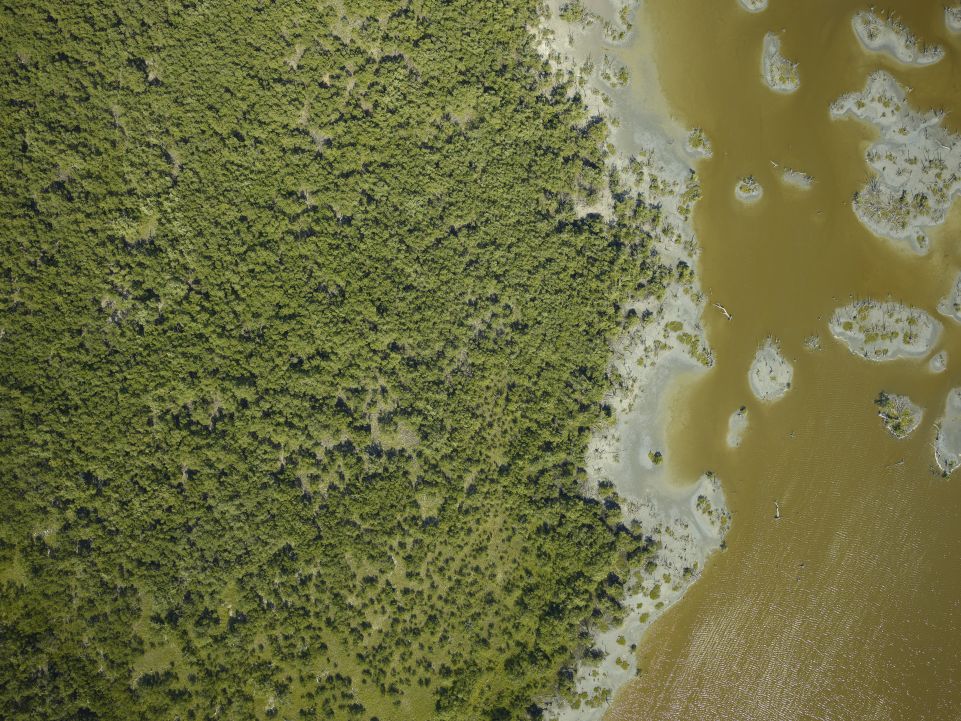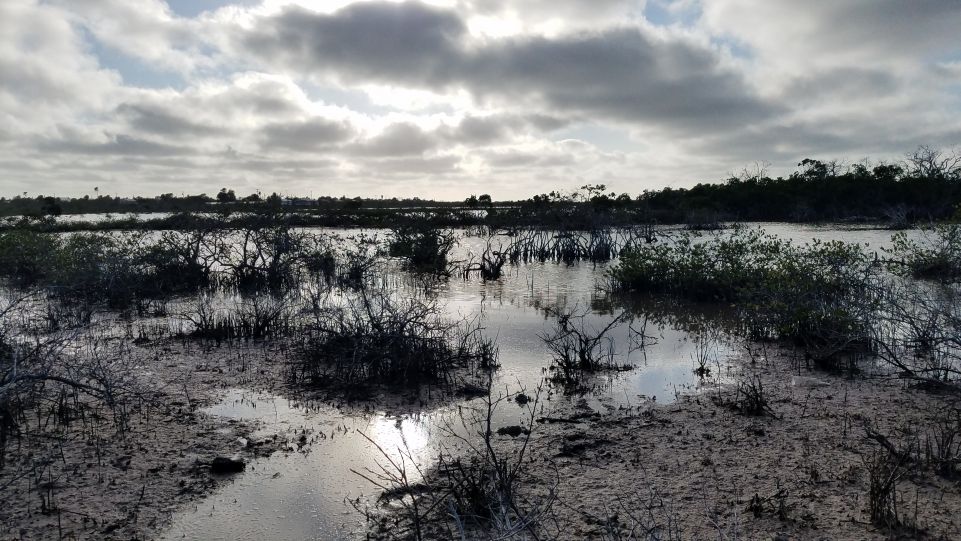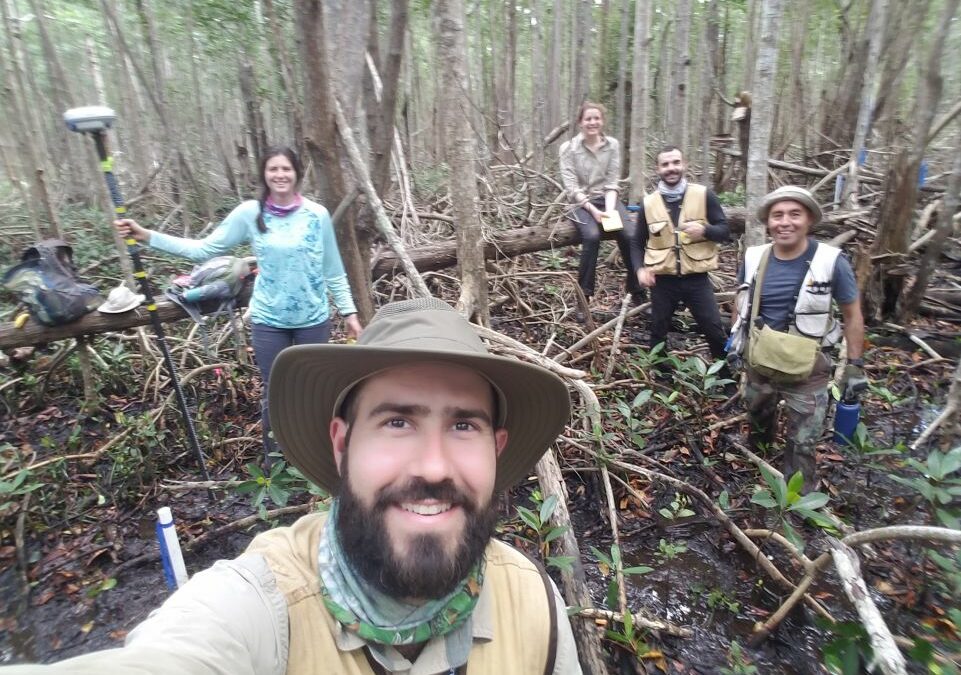
ECU Department of Coastal Studies assistant scientist David Lagomasino and Coastal Studies Institute research technician Anya Leach recently visited the Florida Keys and Everglades National Park to examine the extent of mangrove mortality after Hurricane Irma. The two were part of an interagency collaboration, joining researchers from Florida International University, University of Maryland, NASA Goddard Space Flight Center, and the Everglades National Park.
Though every day of the trip was slightly different based on their location, a typical start to their day included an early wake-up and a team breakfast to discuss the day’s plan. Lagomasino and Leach worked on the ground in areas of disturbed or dead mangrove forests where they surveyed the extent of the damage by taking measurements of tree condition, size, and height. The idea was to use “forensics”, as Lagomasino put it, to help the team determine what the forest looked like pre-Irma via a sort of backwards modeling. They hoped to understand how much of the forest sites and the individual trees had decayed.

Lagomasino explains, “We can tie this mangrove mortality event to Irma by looking at imagery before the storm, with images available from the satellite every 16 days. We can examine photos after Irma to look for ‘regreening’, and we can likely assume that areas that don’t regreen – those that have become ghost forests- are the ones that were most impacted by the storm.” However, Lagomasino went on to say that though the researchers know that the forests were alive based on satellite data, they wonder if the trees were doing “well”. To find the answer, using the data collected by Lagomasino and Leach and the aerial photos collected by members of the NASA team, the researchers will be able to estimate how much live biomass was present before Irma and how much dead biomass is present post-Irma. Mangroves are a carbon-sequestering species, which
makes it an important species for climate research. The more dead biomass there is, the more carbon dioxide has been released into the atmosphere. The measurements taken on the ground and in the air will help the larger team of researchers to model mangrove recovery, or lack thereof, at different time points post-Irma.
While the point of the trip was to understand the impact of Irma on these mangrove forests, the data collected there can also serve as validation for previously made models, and thus can help newer models forecast the impact of storm events in the future.



 Based at the Coastal Studies Institute (CSI), the North Carolina Renewable Ocean Energy Program (NCROEP) advances inter-disciplinary marine energy solutions across UNC System partner colleges of engineering at NC State University, UNC Charlotte, and NC A&T University. Click on the links below for more information.
Based at the Coastal Studies Institute (CSI), the North Carolina Renewable Ocean Energy Program (NCROEP) advances inter-disciplinary marine energy solutions across UNC System partner colleges of engineering at NC State University, UNC Charlotte, and NC A&T University. Click on the links below for more information. ECU's Integrated Coastal Programs (ECU ICP) is a leader in coastal and marine research, education, and engagement. ECU ICP includes the Coastal Studies Institute, ECU's Department of Coastal Studies, and ECU Diving and Water Safety.
ECU's Integrated Coastal Programs (ECU ICP) is a leader in coastal and marine research, education, and engagement. ECU ICP includes the Coastal Studies Institute, ECU's Department of Coastal Studies, and ECU Diving and Water Safety. The ECU Outer Banks campus is home to the Coastal Studies Institute.
The ECU Outer Banks campus is home to the Coastal Studies Institute.

